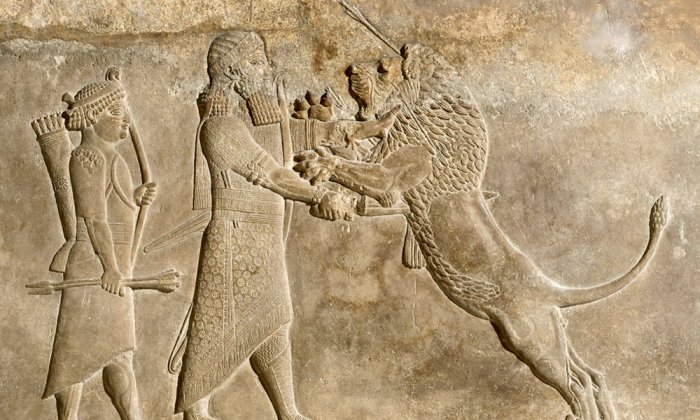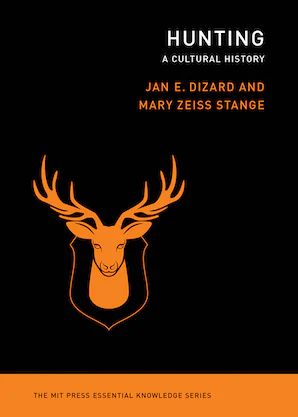When Elites Tried to Monopolize Hunting

It’s hard to say with any precision when the elites — that small slice of a state’s population that lived off the labors of those who tilled the soil, dug the irrigation canals, and tended the domesticated animals — began to arrogate unto themselves exclusive rights to hunt. Yet we know from Greek, Roman, and Hindu myths that hunting became a signifier of status and power. (Recall Xenophon’s annual garden celebration of the goddess of the hunt.) And the monopolization of the hunt meant that the peasants would remain tied to the tilling of the fields and digging of irrigation channels. We cannot possibly do justice to the wide variations in hunting across the cultures that arose with the spread of agriculture, much less to all the variations that unfolded over the course of roughly 6000 BCE to the late 19th century, but we can briefly examine the core features of how the rise of empires and ultimately nation-states shaped hunting.

Hunting quite probably became the first sport of kings. Historian Erich Hobusch’s survey of the history of hunting documents how kings and emperors carved out exclusive hunting grounds for themselves, and were prepared to punish, sometimes harshly, interlopers. Varying degrees of monopolization by elites appear almost as soon as stable regimes arise across the Middle East, Eurasia, South Asia, and Europe. Unfortunately the traces of the ancient world are biased in favor of those elites whose possessions, burial sites, palaces, and temples are far more likely to have survived as evidence as compared to the modest belongings of the peasants. As a result, we cannot be sure how complete the elite domination of hunting was in the earliest empires or how commoners hunted. Commoners must have hunted and at least occasionally risked hunting on private reserves. In some regions, the domination of hunting by elites became nearly complete for periods of time. England was one such extreme example. In 1723, in response to a rise in poaching, the Black Act was passed, making poaching a capital crime. (The law was repealed in 1823.)
The elites’ ability to dominate the wildest beasts made their dominance over their subjects seem legitimate.
Another common feature of hunting in the emerging empires was a focus on killing top carnivores and other dangerous animals. The Assyrian king Tiglath-Pilser I (1112–1074 BCE) boasted, “On the order of Ninurta, my patron, I have, with a brave heart, killed 120 lions in a terrible fight, facing animals on foot. I have also killed 800 lions from my war chariot.” Classical archaeologist Judith Barringer reports that confrontations with wild boar were common in depictions of the hunt in ancient Greece. The Romans notoriously made spectacles of combat with lions. In India, the elite hunters proved themselves by killing tigers and leopards, especially doing so in direct hand-to-claw confrontations. Dangerous animals provided a test of valor and strength that lent the elites an aura of invincibility as well as superhuman capacities. The elites’ ability to dominate the wildest beasts made their dominance over their subjects seem legitimate. It also underscored the claim that the elites were capable of protecting the weak.
Piling up the carcasses of large, dangerous animals must have been impressive. But it wasn’t enough for some. The same king of Assyria who boasted of killing hundreds of lions added, almost as an afterthought, “All kind of game of the fields and fowls in the sky I made my quarry.” Over time these royal hunts became more and more elaborate, enlisting hundreds of peasants to drive game, large and small, to the waiting hunters. Practices of distributing the meat varied widely and details are scarce. It’s admittedly a guess, yet it seems likely that in the earliest stages of state formation, sharing the bounty was probably common, but in mature states, where stratification was explicit and rigid, and where the royals were surrounded by a large retinue of courtiers, little, if anything, would trickle down to the peasantry.
The myths and pageantry of elite hunting served the elites well, but they couldn’t quell criticism. Two examples of this will have to suffice to illustrate the long-term fragility of elite hunting; both involve Great Britain and its empire. The Puritan and Quaker opposition to the Crown focused on the excesses of the elites, not least of which were their extravagant hunts, which offended the sensibilities of the Protestant sects for which excess was the equivalent of idolatry. When the dissenters established the American colonies, they established the foundations of what would become, through twists and turns, a democratic model of hunting, sharply juxtaposed to the elite one.
A continent away in India, and a century and a half later, the British, who by then had responded to discontent at home by elaborating a hunting ethos that became the “sporting hunter,” celebrated the chase and rejected the goal of piling up mountains of dead animals (or at least the celebration and public display of such accomplishments). But they conceded to the local Indian elites, who depended on extravagant hunts to affirm their status. When India won independence in 1947, the new government essentially outlawed almost all hunting.
The legacy of the centuries-long elite domination of hunting has created three different hunting cultures. One, dominant in some former colonies, is a flat-out ban on hunting; second is an elite sporting tradition, followed in much of Europe and the British Isles; and third is a democratic model of hunting that has characterized North America.
Jan Dizard is Charles Hamilton Houston Professor of American Culture Emeritus at Amherst College. He is the author of books and articles on the changing family, race relations, and, of particular relevance to hunting, articles on environmental policy, hunting ethics, and wildlife.
Mary Zeiss Stange is Professor Emerita of Women’s Studies and Religion at Skidmore College. She is internationally recognized as the authority on women and hunting, and specializes in writing and speaking about women, guns, hunting, and ecofeminism.
This article is excerpted from Dizard and Zeiss Stange’s book “Hunting: A Culture History.”



